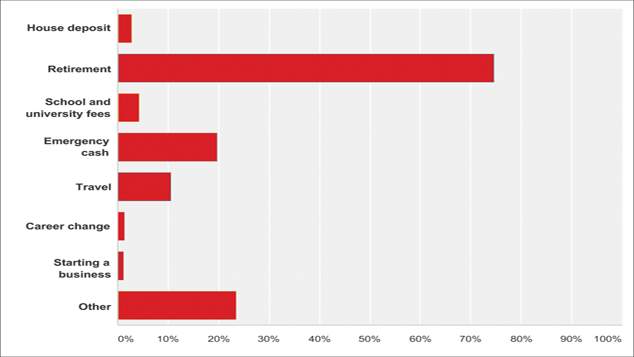What has Lisa got to offer?
The new kid on the block offers a generous incentive to save and may even come to replace pensions, says David Prosser.


The new kid on the block offers a generous incentive to save and may even come to replace pensions.
Meet Lisa, the new kid on the tax-free savings block. From 6 April this year, lifetime individual savings accounts will offer yet another option for savers and investors thinking about how to use their annual Isa allowance. The big draw of the new account is that the government is offering bonus cash to encourage people to invest.
For every £4 you contribute to a Lisa, it will add £1, up to a maximum annual bonus of £1,000 on a £4,000 contribution. You can put more than this into your Lisa, up to the annual Isa allowance (this rises to £20,000 in 2017-2018), but you'll only get the 25% bonus top-up on that first £4,000.
Subscribe to MoneyWeek
Subscribe to MoneyWeek today and get your first six magazine issues absolutely FREE

Sign up to Money Morning
Don't miss the latest investment and personal finances news, market analysis, plus money-saving tips with our free twice-daily newsletter
Don't miss the latest investment and personal finances news, market analysis, plus money-saving tips with our free twice-daily newsletter
Still, this is a generous incentive, worth the same as the tax relief investors in private pension schemes get if they're basic-rate taxpayers. And that's significant Lisas have been designed to offer people another way to save for old age; in fact, some advisers believe that Lisas may even replace pensions as people's primary retirement savings vehicle, particularly if the government changes the rules on pensions tax relief.
How do they work?
First the basics. To open a Lisa, you must be aged between 18 and 39 at the start of the tax year. Your contributions (plus the bonus) can be invested in a range of assets, including both cash and shares, depending on the Lisa provider you choose. The amount you pay in then counts against your annual allowance for the year if you have some of your allowance left over, you can still have a regular cash Isa, a stocks and shares Isa, or even one of the new innovative finance Isas, as long as you don't exceed the annual cap.
Once you've got a Lisa, you can contribute each year until you turn 50 and claim the bonus in each of those years. This means that the maximum free cash on offer is £32,000 to get that, you would have to open an account at age 18 and then pay in at least £4,000 a year for the next 32 years. Savings and investments in a Lisa grow free of tax on income and profits, as with other types of Isa, but the rules on withdrawals are more complicated.
This is because Lisas are being marketed as useful for two very different financial planning goals. Some will use the schemes to save money for the deposit on a first property; if you're doing that, you can make withdrawals at any time after 12 months of opening the Lisa, as long as you use the cash to buy a first home worth no more than £450,000.
Others will see Lisas simply as a long-term savings plan. That's fine too, but if you're not using the money for a first property purchase, you're supposed to wait until at least age 60 before making withdrawals. Earlier withdrawals will be allowed, but you'll have to pay a 25% charge in other words, you not only give back the bonuses you received from the government, you also hand over a chunk of any money you've made. The only exception to this rule is if you're diagnosed with a terminal illness, although if you die, your Lisa can be passed on to your spouse or civil partner.
Should you invest?
So, are Lisas for you? If your current financial priority is to save enough for a first home, Lisas could be a good option the government top-up is free cash, your savings will grow tax-free, and the scheme is more attractive than the help-to-buy Isa it is eventually scheduled to replace. By contrast, the debate over the merits of Lisas for retirement-planning purposes at least as an alternative to traditional pensions is more balanced. Tax is one key consideration.
For basic-rate taxpayers, the Lisa bonus is worth the same as the tax relief on a private pension. Moreover, when they cash in their Lisas, there will be no tax to pay, whereas only 25% of a private pension can be taken tax-free. Higher-rate and additional-rate taxpayers are also hit by this latter restriction, but the upfront tax relief on pensions they currently get is worth more than the government is offering via Lisas.
Bear in mind, though, that if you have the option of joining a pension scheme at work, you'll be entitled to a contribution from your employer on top of your own. This support isn't available in Lisas and may more than offset the additional tax efficiency. Pensions provider Scottish Widows looked at two basic-rate savers making £100 payments into a Lisa and a private pension, and then earning a 5% return for ten years on their money. Taking into account tax relief and bonus payments, both savers would have a pot worth about £204 at the end of this period.
The Lisa saver would get all of this cash tax-free, while the pension saver would have to pay basic-rate tax on 75% of it, reducing the sum to around £173. Assume, however, that the pension saver is entitled to a contribution worth 3% of pay from their employer; then their fund would be worth £326 after ten years, or £277 after tax.
Flexibility versus self-discipline
You also need to consider the issue of flexibility. You have to wait longer to draw down funds from a Lisa with no penalty-free access before age 60 than a private pension (accessible from the age of 55). On the other hand, even after the recent pensions freedom reforms, the tax system effectively imposes limits on how you use pension savings in retirement, whereas you'll be free to use Lisa cash as you see fit. That said, the rigid rules on pension withdrawals could stop you from succumbing to the temptation to dip into your savings, whereas the ability to withdraw early from Lisas as long as you pay the penalty might be hard to resist.
The final consideration is how much you may invest. With an effective annual limit of £4,000 (since there's no bonus on contributions above this amount), Lisas are much less generous than private pensions, where the annual allowance for most is £40,000. If Lisas are your only savings vehicle, your ability to save large sums will be compromised.
For many savers, this isn't a binary question: since Lisas offer some advantages over pensions, the most sensible option may be to use them alongside your pension, but not as a replacement. If putting cash into a Lisa requires you to reduce your pension saving, think carefully, particularly if you have access to an employer's contribution. But using both may be a good way to spread risk and to protect against future changes in government policy.
Which provider should you go with
Lisas are being launched with unusual haste they'll be available from April, just 13 months after the government unveiled preliminary details of the scheme in the budget last March. As a result, some product providers say they haven't been given enough time to get Lisa products up and running for the beginning of the 2017-2018 tax year.
Big name Isa providers, including Standard Life and Fidelity, have already warned that, while they will offer Lisas eventually, they won't be ready to do so in April. Other major providers, including Nationwide Building Society, have said that they think the new scheme is overly complicated and that they're therefore steering clear. Still, some Isa providers are committed to providing Lisas from the start Hargreaves Lansdown (a favourite with MoneyWeek readers), for example, has promised to be ready.
The result of this confusion is that investors' choice may be limited at least initially. You're supposed to be able to use Lisas to invest in the full range of Isa-permissible assets, from cash to shares and other investments, either through a managed approach, or by making your own investments via platforms such as online fund supermarkets and stockbrokers. But that may not be possible straight away.
For which of the following goals are you using your Isa?
Investing for retirement and saving cash for emergencies are the main ways in which MoneyWeek readers use their Isas. Building a travel fund was always a popular choice. A sizeable number of readers added that generating an extra tax-free income to supplement their pension is an important goal.


David Prosser is a regular MoneyWeek columnist, writing on small business and entrepreneurship, as well as pensions and other forms of tax-efficient savings and investments. David has been a financial journalist for almost 30 years, specialising initially in personal finance, and then in broader business coverage. He has worked for national newspaper groups including The Financial Times, The Guardian and Observer, Express Newspapers and, most recently, The Independent, where he served for more than three years as business editor.
-
 Barclays warns of significant rise in social media investment scams
Barclays warns of significant rise in social media investment scamsInvestment scam victims are losing an average £14k, with 61% of those falling for one over social media. Here's how to spot one and keep your money safe
By Oojal Dhanjal Published
-
 Over a thousand savings accounts now offer inflation-busting rates – how long will they stick around?
Over a thousand savings accounts now offer inflation-busting rates – how long will they stick around?The rate of UK inflation slowed again in March, boosting the opportunity for savers to earn real returns on cash in the bank. But you will need to act fast to secure the best deals.
By Katie Williams Published